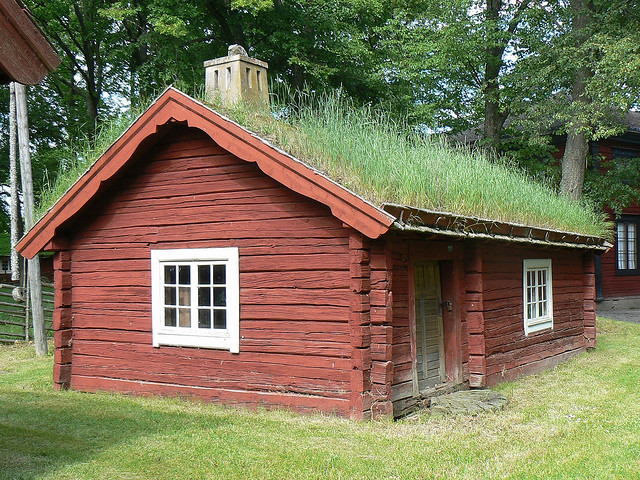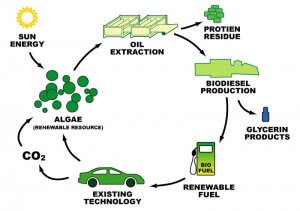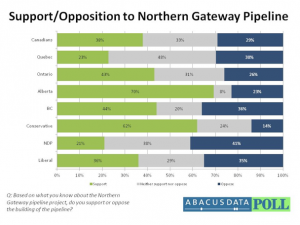This post originally appeared on the Carbon Talks blog.
The stereotypical image of the environmentalist as someone who is trying to escape society, go back to nature, build a log cabin in the woods to live off the land, and escape the monstrous and oppressively capitalist economic machine is becoming quickly outdated. As a society, some of us are beginning to accept that the neoliberal notion of progress – by some embraced as the most efficient tool for economic growth, and by others condemned as a noose tightening around the necks of the less fortunate – is not entirely incompatible with the goal of protecting the environment.
That’s not to say that money, and the pursuit of wealth, haven’t been major players in digging us into the hole where we stand now; I’m not sure anyone could argue otherwise with a straight face. But it does suggest that money, and again the pursuit of wealth, may be major players in returning us to the sunshine. This hole is deep, no doubt, and it’s filled with both the spoils and waste of the unfettered pursuit of progress, that ephemeral and elusive goal. However the tool that we used to dig ourselves into this hole, may in fact be not dissimilar to that we must use to dig ourselves out. That tool is simple: appeal to our wallets.
To encourage homeowners to retrofit their homes for energy savings is a daunting task. The up-front costs of home energy retrofits are large, whether that be a new furnace, insulation replacement, or draft-proofing. Anybody who wants to take advantage of the energy savings inherited from such a project must be confident that the investment will pay off. If you own your home, or are confident that you will be in the same house in ten or twenty years, then there’s no question. But if you’re young, unsure about future plans, or simply don’t have the financial stability to make such an investment, then it likely seems too risky.
Current governmental mechanisms, such as ecoENERGY and BC’s LiveSmart, provide grants to homeowners for retrofits, however uptake has been low, conditions for qualifying are stringent, and money for grants is limited. Other existing systems are based on bank loans and other private financing. While some banks are offering “eco-mortgages” and “green loans”, these rely on traditional credit mechanisms that are risky, long-term, and not accessible to low-income earners
This is where governments can step in and implement mechanisms to make the decision easier. In the United States twenty-seven states have adopted a model called Property Assessed Clean Energy (PACE) by which local and municipal governments provide loans to homeowners for retrofits (the 2008 financial crisis has stalled these plans, but many are likely to live again). Critically, these loans are repaid via a property tax assessment. This means that if you sell your house, the loan goes with it – it’s inherited by the buyer.
This system takes the risk out of retrofit projects. A well-planned retrofit can immediately produce energy savings, and by design these savings offset the increased tax payment. The homeowner saves money almost immediately, the value of the property potentially increases, and there is no long term risk.
Up here in Canada, the discussion on PACE-style mechanisms has been quiet but growing. A comprehensive report by the David Suzuki Foundation in 2011 examined the need for a financing mechanism for home energy retrofits similar to PACE. The report concludes that current Local Improvement Change (LIC) mechanisms present in municipalities across the country – designed for public infrastructure such as sidewalks, streetlights, and local parks – could be modified to apply to home retrofits, producing a made-in-Canada approach called Property Assessed Payments for Energy Retrofits (PAPER).
The hurdles in transitioning a LIC-type mechanism to PAPER lay mainly in terms of ensuring municipal governments have the legal and administrative power to make it happen. That is, it’s not so much a question of whether we can make this work, it’s a matter of working out the details.
No matter how we frame our politics, most of us spend at least a few minutes a day worrying about money; in the economic system that we’ve been born into, it inevitably influences the choices we make. In working to promote a low-carbon economy, we should recognize this system, and use it to our advantage. Everyone wants to spend less. With the right mechanisms in place, Canadians will not have to be forced to reduce their energy costs, they’ll do it because it leaves more money in their wallets. As long as those cost savings aren’t channeled toward a new Hummer, then everybody wins.
(Icon photo courtesy of phototouring/Flickr)









